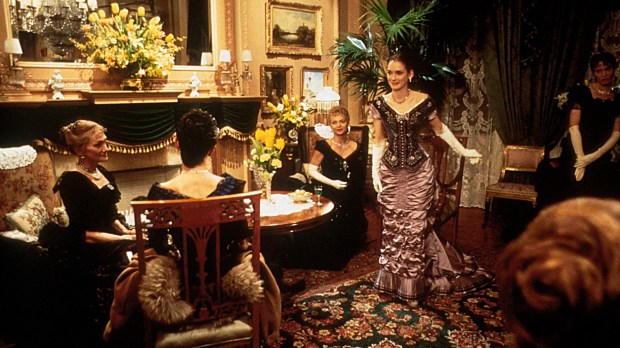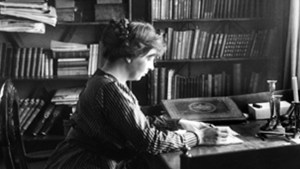Edith Wharton’s The Age of Innocence transports us to a world of elegant dinner parties and opera performances, extravagant balls and intimate soirées, glittering conversations and discreetly guarded family interests. New York City and its cultural elites of the 1870s form the novel’s setting. It is the same milieu in which Wharton herself came of age, married, and resided before moving to France and establishing her name in American letters.
Written in 1920, The Age of Innocence won the Pulitzer Prize, for the first time awarded to a woman. An insider, but also a self-exiled observer, Wharton depicts the narrow circle of families that made up New York’s upper class in the late 19th century.

A classic love triangle
The Age of Innocence follows the classic pattern of a love triangle. Handsome Newland Archer is engaged to the delightful May Welland. Shortly before their engagement is announced, Archer meets his fiancée’s cousin, the mysterious Countess Olenska, recently arrived from Europe. Hints dropped throughout the novel reveal Olenska’s story. Raised in New York, she had made a brilliant match, but the marriage degenerated into abuse and humiliation. Having left her husband, Olenka seeks refuge with her family in America.
The countess’s boldness, impeccable taste, and quiet aura of pathos stand in sharp contrast to the radiance and candor of May. May excels at archery. Bow and arrow in hand, she appears more like the goddess Diana than a romantic interest.
Archer is fond of his fiancée, yet almost imperceptibly and certainly without design on either side, he falls under the spell of Olenska. They only meet a handful of times. Faltering words and hoped-for assignations that never take place make up the substance of their relationship. Their love unfolds within a web of festive receptions, theatre performances, drawing room gatherings, and garden parties of New York’s elites.
Societal constraints
Convention and etiquette moderate every verbal exchange, protect family dignity, and temper private aspirations. Olenska and Archer vacillate between respect for convention and desire to break free of it. They acknowledge their love for each other, but never publicly disclose it. To love one another, they must act like strangers. Only by assuming indifference can they preserve opportunities to meet.
Social convention in The Age of Innocence is at once freeing and tyrannical. It furnishes a reliable script for arranging one’s life. It removes the burden of ambiguity and indecision by dictating styles of dress, courtship rituals, and topics of conversation. Convention also softens family conflict, protecting people from unwelcome discoveries and complicated relationships, keeping the world ordered and agreeable.
Of course it also restricts individuality and truncates desire. Olenska’s quest for divorce is stifled in the novel not because of moral truth, but because it would create an ugly scene. Similarly, despite Archer’s longing for a different life, the price of personal and public censure proves too steep.
In the end, the novel leaves its characters sadly alone: upstanding citizens, isolated in the fortress of social incorruptibility.

A sacrificial love
Yet there is another, more hopeful way to consider the novel. Archer and Olenska are not desperate rebels set on violating convention. Neither are they victims of ossified mores. Rather, they are people who yearn for meaning in their lonely and corseted lives. Love, which breaks into their consciousness, moves them to take responsibility for their existence. It forces them to choose how to live within the gilded world they inhabit.
In submitting to societal pressure, they may find the deepest meaning of all: the experience of love that protects the good of the other through sacrifice. Olenska’s departure preserves Archer’s reputation and family. Archer’s surrender upholds Olenska’s dignity despite her broken life. It is perhaps no coincidence that Edith Wharton was drawn to Catholicism late in life (though as far as we know she never converted).
A final word should be said about the excellent 1993 film adaptation of the novel. By compressing dialogues and reshuffling episodes, Martin Scorsese’s screen version of The Age of Innocence tells the story compactly, relying on cinematography and visual details — precisely lit interiors, lavish costumes, and even close-ups of food. For instance, at May’s triumphant dinner party a mere streak of a red sauce mars the symmetry of a plated dish to suggest Archer and Olenska’s anguish.
Where many films fail to match the beauty of the book, Scorsese’s film succeeds. Faithful to Wharton’s story, it recreates her world of shimmering settings and faint understatements with nuance and intelligence, inviting sympathy for the characters’ sorrow and awakening.



